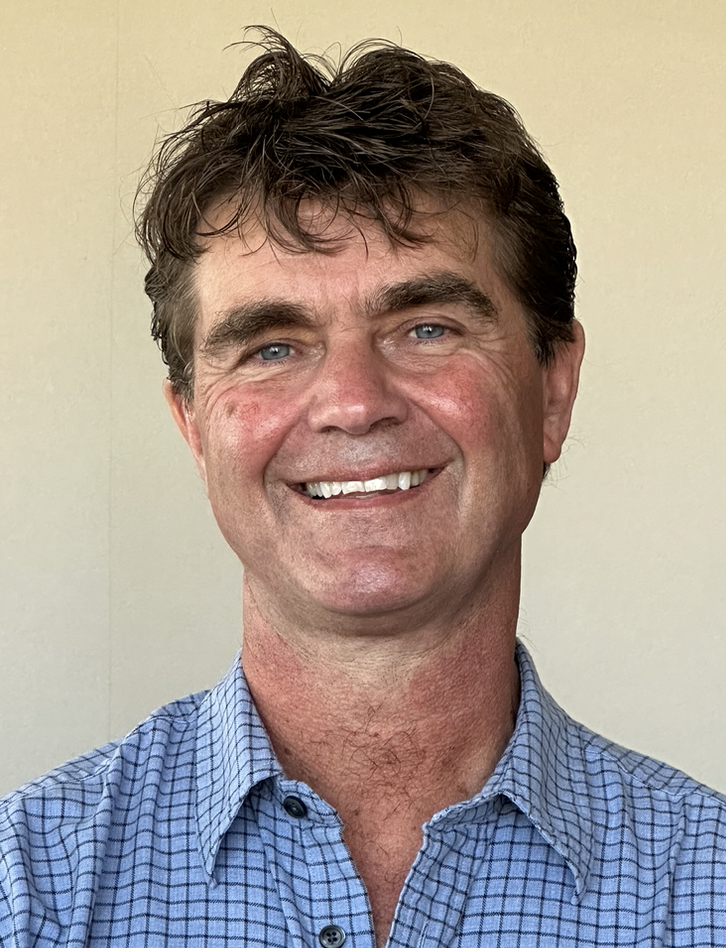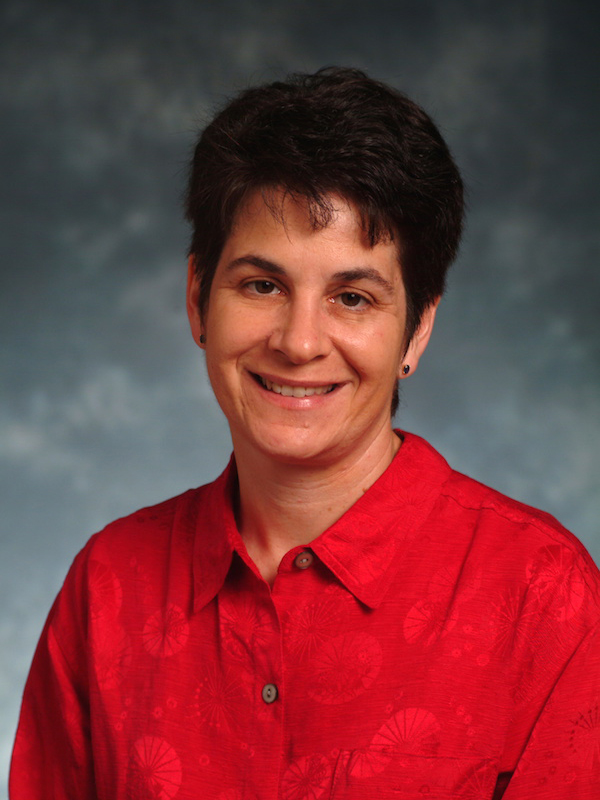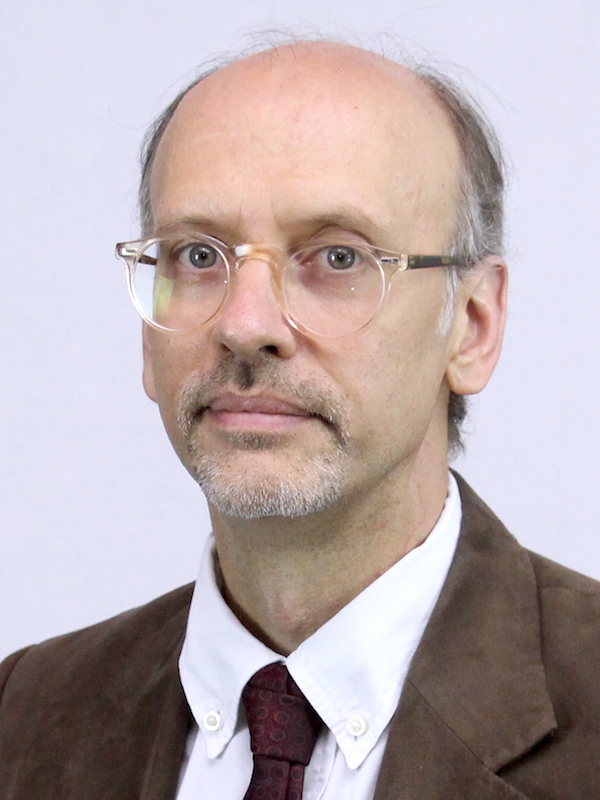Mark Everett
- Professor of Geophysics
- Howard Karren Professor
- Near-surface Applied Geophysics
- Office: Halbouty 357A
- Phone: 979-450-9824
- Email: everett@geo.tamu.edu

Andreas Kronenberg
- Professor and Michael T. Halbouty Chair in Geology
- Assoc. Director, Center for Tectonophysics
- Tectonophysics
- Structural Geology
- Rock Mechanics
- Mineral Physics
- Office: Halbouty 154
- Email: kronenberg@geo.tamu.edu

William (Will) Lamb
- Professor
- Metamorphic Petrology
- Geochemistry
- Deep-Seated Fluids
- Office: Halbouty 306
- Phone: 979-845-3075
- Email: w-lamb@tamu.edu

Brent Miller
- Professor
- Associate Department Head
- Office: Halbouty 228
- Phone: 979-458-3671
- Email: bvmiller@geo.tamu.edu

Julie Newman
- Professor
- Department Head
- Ray C. Fish Professor
- Structural Geology and Tectonics
- Office: Halbouty 108
- Phone: 979-845-3466
- Email: julie-newman@tamu.edu

Nicholas Perez
- Associate Professor
- Tectonics
- Basin dynamics
- Fold-thrust belts
- Continental rifts
- Office: Halbouty 309
- Phone: 979-845-6529
- Email: ndperez@tamu.edu


Facilities
Electron Microprobe Laboratory
The electron microprobe is widely applied in the chemical characterization of solid materials, including minerals, metals and biological specimens. This instrument is used to image and chemically characterize features as small as one micron, and is particularly well suited for quick, accurate sensitive analyses of all chemical elements from beryllium (atomic number 4) to the man-made elements beyond uranium (atomic number 92). These elements can usually be detected in concentrations as low as 100 parts per million or less at the scale of a few microns.
Radiogenic Isotope Geosciences Laboratory
The Radiogenic Isotope Geosciences Laboratory is a 1,550 square-foot laboratory complex that consists of a perchloric acid fume hood room, gown-up room, dilution and weighing room, clean general chemistry room (<2,000 particles >0.3 μm per ft3 air) and ultra-clean chemistry room (<100 particles >0.3 μm per ft3 air). Clean-air workstations in each chemistry lab are better than 100 particles >0.3 μm per ft3 air, and two recirculating laminar flow hoods both tested at zero particles. The instrument room houses a Triton thermal-ionization mass spectrometer, an Element XR high-resolution inductively coupled plasma mass spectrometer and a Photon Machines Analyte 193 laser-ablation system.
Fluid Inclusion Laboratory
Our Fluid Inclusion Laboratory is equipped with a modified United States Geological Survey heating and freezing stage, designed by Fluid Inc., USA. This allows microthermometry to be performed on inclusions. Passing heated air or nitrogen over the sample permits heating of inclusions to 700 °C. By passing nitrogen gas through liquid nitrogen and then over the sample, inclusions can be cooled to -190 °C.
Microscopy and Imaging Center
The Microscopy and Imaging Center (MIC) is staffed by research scientists with expertise in transmission electron microscopy, scanning electron microscopy and light microscopy. These staff members are happy to provide quality training and education through one-on-one sessions, short courses, formal courses, open house seminars and more. MIC's mission is to provide current and emerging technologies for teaching and research involving microscopy and imaging in life and physical sciences at Texas A&M and beyond, and to offer training and support services for microscopy, sample preparation, in situ elemental/molecular analyses, and digital image analysis and processing.
Materials Characterization Facility
The Materials Characterization Facility (MCF) provides researchers with access to high-end instrumentation essential for fundamental studies of the surface and interfacial properties of materials, such as ion and electron based spectroscopies, electron, optical and scanning probe microscopies. The MCF is staffed by research scientists with expertise in these areas, and they provide fundamental research training to students and faculty on our instrumentation, as well as consolation of measurements needs and data interpretation. Beyond Texas A&M, the MCF also supports collaborative research projects with outside industrial users. The facility also offers educational activities such as lab tours, workshops, hands-on demonstrations, open houses and a lunchtime seminar series.
Handin Laboratory for Experimental Rock Deformation
The Handin Laboratory provides facilities to investigate the deformation of rock under controlled conditions appropriate to the environments of the upper crust to the lithospheric mantle. The laboratory is equipped with groups of different rock deformation apparatus, devices for measuring physical properties, controlled environment chambers, a rock repository, sample preparation equipment and a machine shop. Graduate students, visiting scientists, research scientists and faculty use the laboratory for research and teaching activities. The Handin Laboratory plays a key role in the laboratory component of the graduate core curriculum courses of the Center for Tectonophysics (GEOP 615, Experimental Rock Deformation) and of the Ph.D. in Geophysics (GEOP 660, Physics of the Earth's Interior).
Courses
GEOL 310 Planetary Geology
This course is an introduction to planetary science. Topics include organization and composition of the solar system, including planets, satellites and asteroids; surface features and internal structures of the terrestrial planets and moons of the outer planets; the dynamic processes of planetary resurfacing, including volcanism, tectonism, weathering and impacts; and the history and future of solar system exploration.
GEOL 609 Field Geology
This course provides individual instruction in advanced and specialized field methods, geologic interpretation and field evaluation procedures. Choice of topics and locations of field studies will vary depending upon individual and specific needs.
GEOL 643 Introduction to Electron Microprobe Analysis
This course, offered annually during the fall semester, provides graduate students in the geological and materials sciences with basic electron beam and X-ray microanalysis theory and shows them how to apply it to analytical problems using the Cameca SX50 electron microprobe.
GEOL 645 Geochronology
This course offers individual instruction in advanced and specialized field methods, geologic interpretation and field evaluation procedures. Choice of topics and locations of field studies will vary depending upon individual and specific needs.
GEOL 678 Earth Science Modeling
This course teaches techniques for building, solving and analyzing numerical models applied to a wide variety of problems in geology, geochemistry, geobiology and geophysics; derivation and scaling of conservation laws; and finite difference and finite element techniques and error analysis. Laboratories involve programming models in MATLAB or a high-level language.
GEOL 681 Seminar
Reports and discussions of current research and selected topics from geologic literature.
GEOL 689 Special Topics in...
Selected topics in an identified area of geology. May be repeated for credit.
GEOP 470 Computational Geophysics
This course is an introduction to fundamental geophysical problems in heat and mass transport, gravity, fluid flow and elasticity; conservation equations; constitutive equations; boundary conditions; and scaling geologic problems.
GEOP 611 Geomechanics
Students in this course learn about the development of continuum mechanics and its application to rock deformation; stress, strain, stress equilibrium and constitutive relations; and governing equations for elastic solids and viscous fluids formulated and used to solve elementary boundary-value problems, which apply to structural geology and solid-state geophysics.
GEOP 651 Theoretical Seismology
Topics in this course include wave propagation in unbounded and bounded elastic media; seismic reciprocity and the elastodynamic representation theorem; radiation patterns from earthquake sources; body waves, Rayleigh waves, Stoneley waves, Love waves and Lamb waves; characteristic equation for surface waves in a layered half-space; dispersion and phase and group velocities; methods of stationary phase and steepest descents; Cagnaird-deHoop technique; ray theory in an inhomogeneous earth; inversion of travel times; viscoelastic wave propagation; and normal modes of vibration of the earth.
GEOP 652 Earthquake Seismology
Topics in this course include seismometry and earthquake precursors; mathematical theory of elasticity and its application to earthquake studies; dissipation of elastic energy; seismic sources; earthquake risk; free modes of the earth; and discrimination between underground nuclear explosions and earthquakes.
GEOP 660 Physics of the Earth's Interior
Topics in this course include the structure, composition and physical state of the Earth's interior; constraints on models of the Earth imposed by seismic, gravity, heat flow and electrical conductivity; thermodynamics and high pressure mineral physics; Earth's motion and deformation; and rheology.
GEOP 666 Principles of Geodynamics
Topics in this course include geological and geophysical methods and phenomena pertinent to geodynamics; plate tectonics; seismicity and seismology; magnetics; gravity; heat flow; igneous, metamorphic and sedimentary petrology; paleontology; and rock mechanics.
